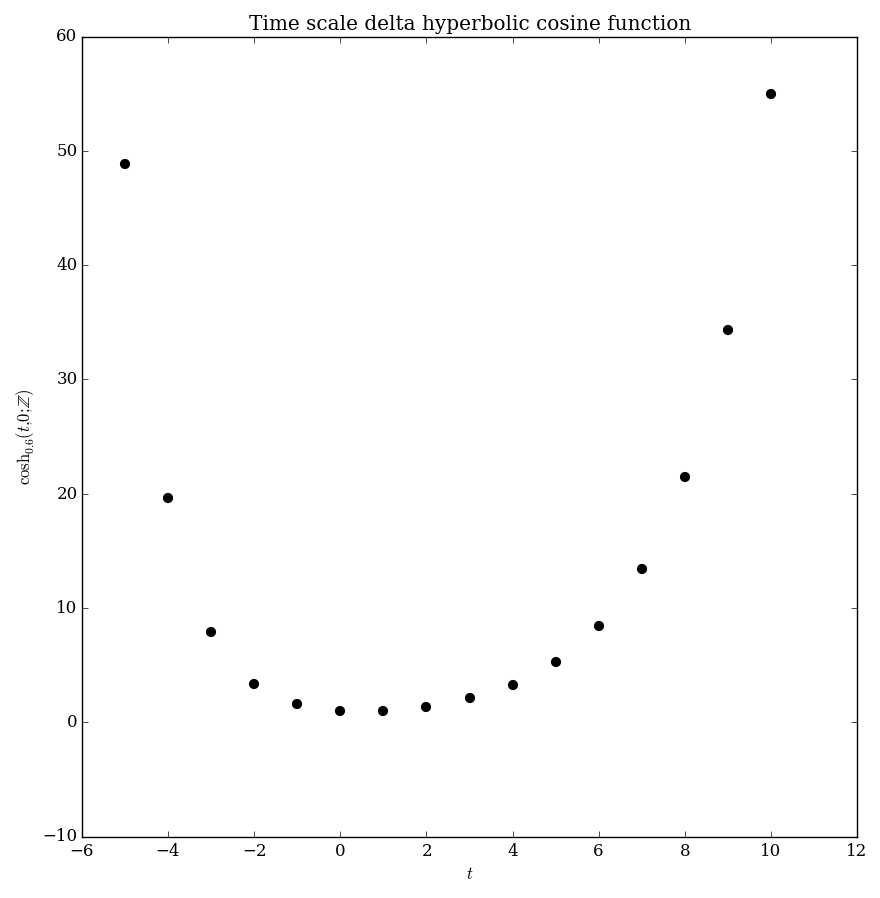Difference between revisions of "Delta cosh"
| Line 42: | Line 42: | ||
|} | |} | ||
| − | {{:Delta special functions footer}} | + | <center>{{:Delta special functions footer}}</center> |
Revision as of 22:33, 2 June 2016
Let $p \in C_{rd}$ and $-\mu p^2$ be a regressive function. Then the $\Delta$-hyperbolic cosine function is defined by $$\cosh_p(t,s) = \dfrac{e_p(t,s)+e_{-p}(t,s)}{2}.$$
Contents
Properties
Theorem
Let $p\in C_{rd}$. If $-\mu p^2 \in \mathcal{R}$, then $$\cosh^{\Delta}_p = p\sinh_p,$$ where $\cosh_p$ denotes the $\Delta$-$\cosh_p$ function and $\sinh_p$ denotes the $\Delta$-$\sinh_p$ function.
Proof
References
Theorem
The following formula holds: $$\cosh^2_p - \sinh^2_p = e_{-\mu p^2},$$ where $\cosh_p$ denotes the $\Delta$-$\cosh_p$ function, $\sinh_p$ denotes the $\Delta$-$\sinh_p$ function, and $e_p$ denotes the $\Delta$-$e_p$ function.
Proof
References
Theorem
Let $\gamma$ be a nonzero regressive real number, then a general solution of the second order dynamic equation is $$y^{\Delta \Delta}-\gamma^2 y= 0$$ is given by $$y(t) = c_1 \cosh_{\gamma}(t,s) + c_2 \sinh_{\gamma}(t,s).$$
Proof
References
Examples
| $\mathbb{T}=$ | $\cosh_1(t,0)=$ |
| $\mathbb{R}$ | $\cosh_1(t,0)=\cosh(t)$ |
| $\mathbb{Z}$ | |
| $h\mathbb{Z}$ | $\cosh_1(t,0)=\dfrac{1}{2}\left( (1-h)^{\frac{t}{h}} + (1+h)^{\frac{t}{h}}\right) = \displaystyle\sum_{k=0}^{\infty} h_{2k}(t,0) $ |
| $\mathbb{Z}^2$ | |
| $\overline{q^{\mathbb{Z}}}, q > 1$ | |
| $\overline{q^{\mathbb{Z}}}, q < 1$ | |
| $\mathbb{H}$ |
$\Delta$-special functions on time scales | ||||||
$\cos_p$ |
$\cosh_p$ |
$e_p$ |
$g_k$ |
$h_k$ |
$\sin_p$ |
$\sinh_p$ |
